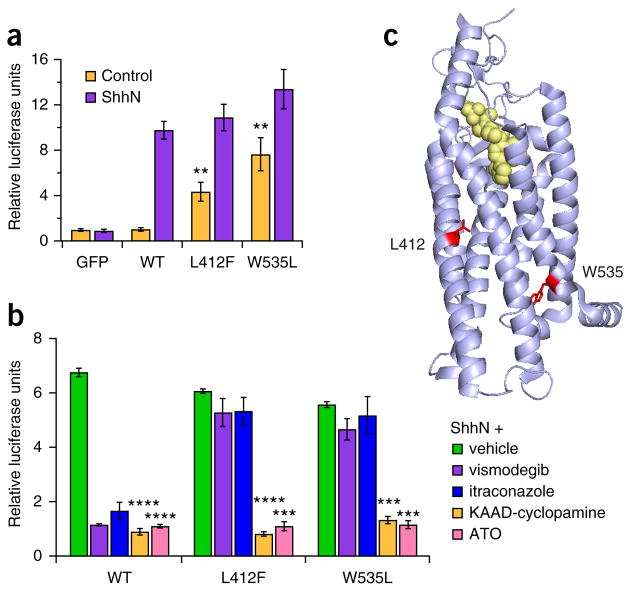Figure 2.
SMO Leu412Phe activity and inhibition. (a) Relative expression of a Hedgehog-sensitive Gli-driven luciferase reporter in Smo−/− MEFs expressing GFP (negative control), wild-type human SMO (WT) or the Leu412Phe or Trp535Leu SMO mutants following stimulation with control medium or medium containing the Shh N-terminal domain (ShhN). Note the significant basal induction of Hedgehog-pathway activity by Leu412Phe and Trp535Leu. **P < 0.01, two-sided Student’s t test. Results are representative of five independent trials.
(b) Effect of treatment with vismodegib (200 nM), itraconazole (2 μM), KAAD-cyclopamine (300 nM) and ATO (8 μM), showing significant reduction in Hedgehog activity in cells expressing SMO Leu412Phe and SMO Trp535Leu with KAAD-cyclopamine and ATO treatment. ***P < 1 × 10−5, ****P < 1 × 10−6, two-sided Student’s t test. Results are representative of two independent trials. Data in a,b are from three independent transfections (three biological replicates), and error bars represent s.d. (c) Crystal structure of human SMO (Protein Data Bank (PDB) 4JKV) bound to the LY2940680 inhibitor10 (yellow) with amino acids 412 and 535 highlighted (red) to show transmembrane domain positioning.

